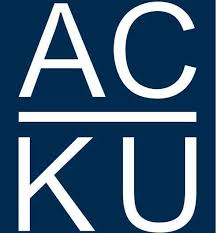The pasture story : trying to get it right in Afghanistan : the Saleh experience / Liz Alden Wily.
Material type: TextLanguage: Publication details: [Afghanistan : Ministry of Agriculture, Sustainable Agricultural Livelihoods in Eastern Hazarajat Project (SALEH)], 2008.Description: 97 p. : ill., maps ; 30 cmSubject(s):
TextLanguage: Publication details: [Afghanistan : Ministry of Agriculture, Sustainable Agricultural Livelihoods in Eastern Hazarajat Project (SALEH)], 2008.Description: 97 p. : ill., maps ; 30 cmSubject(s): - Pastures – Afghanistan
- Pastures – Afghanistan – Case studies
- Rangelands – Afghanistan – Case studies
- Range policy – Afghanistan
- Range management – Afghanistan – Case studies
- Land tenure – Afghanistan
- Land titles – Afghanistan
- Dispute resolution (Law) – Afghanistan
- Conflict management – Afghanistan
- Nomads – Afghanistan
- Pamphlet HD 1641 .A34 .W55 /2008/ + /PDF/(3.41MB)
| Item type | Current library | Call number | Status | Date due | Barcode | Item holds | |
|---|---|---|---|---|---|---|---|
 Books
Books
|
Afghanistan Centre at Kabul University | Pamphlet HD 1641 .A34 .W55 /2008/ + /PDF/(3.41MB) (Browse shelf(Opens below)) | Available | 21319 |
Cover title.
“August 2008”.
sustainable Agricultural Livelihoods Project in Eastern Hazarajat (SALEH)—cover page.
Includes bibliography—(p. 89-93).
Contents: Acknowledgements (p. 5)—Glossary (p. 6)—Introduction (p. 8)—Chapter one : the context (p. 9)—Chapter two : the piloting experience (p. 26)—Chapter three : status and lessons from community based pasture management (p. 63)—Chapter four : contributing to policy change (p. 73)—Bibliography (p. 89).
Summary: ” This paper describes the process of arriving at a workable process of community based management of pastures in Afghanistan. It is both a record of a project initiative and a story of a national government getting to grips with a chronic issue and finding a way forward. There are six aspects to this story. The first illustrates a common conundrum of post-conflict states torn between the impulse to get things back to the way they were before civil war and the reality that society and its demands have changed and the norms of the past no longer unchallengeable. The second facet is about practical ways to solve inter-communal dispute at the local and larger inter-ethnic level, and as played out in particular between nomadic and settled populations as they compete for scarce resources. There is a third dimension, concerning land reform - not in the classical sense of asset distribution between rich and poor - but as affecting those resources which were not a focus in 20th century land reform, properties traditionally held collectively by people and state, like pastures, forests and wetlands. This brings sharply into focus needed paradigm shifts in meanings of public lands, customary rights and how such precious resources are recognised as owned and regulated in a more democratic 21st century. Fourth, the story is about the trials of post-conflict governance in which new administrations grapple with the consequences of war-time resource grabbing and self-enriching tendencies of officialdom and local power-holders, the challenges of weak rule of law and the need to manage the threat of violence in a population no longer unused to picking up the gun. Practical processes towards democratisation become a primary theme, in this case how to deliver meaningful empowerment to ordinary rural citizens in respect of those resources upon which their livelihood depends and in the process place these resources on a new path to sustainable utilization Fifth, this is a story about methodology, illustrating the authority in arriving at new policy and law through localised and practical learning by doing and by integrating conflict resolution, conservation and community based regulation in a single commonsensical approach. And of course, sixth, the experience is also about the frustrations of project implementation; shortfalls in money, transport and personnel at critical times, the changing donor-government relationship as the latter finds it feet after a long conflict, and not least, the reality that different advisory projects quite commonly send different messages”—(p. 8).
